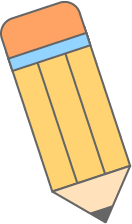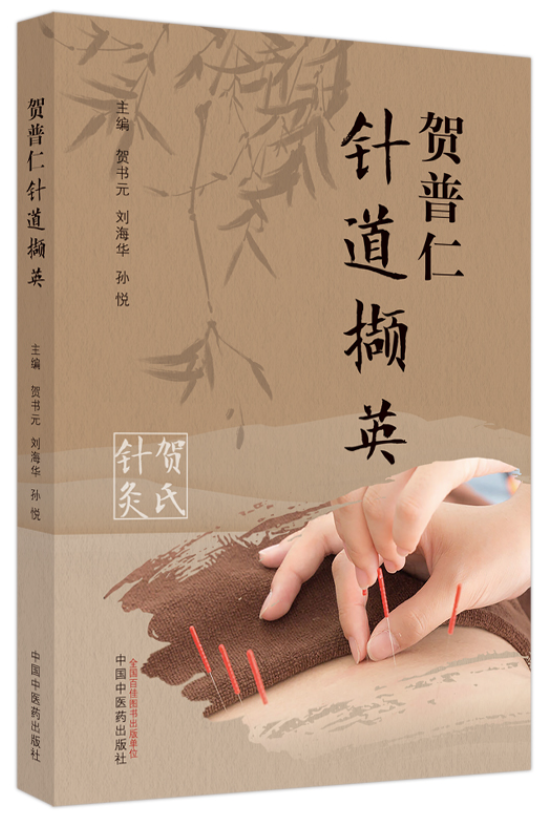Editor’s Note
Currently, we are in a season of transition, with rapid weather changes and significant temperature fluctuations. Friends who have a history of asthma should pay extra attention to maintenance and protection during this time. A slight oversight may lead to an invasion of wind pathogens, causing asthma to recur. Professor He Purin, a master of traditional Chinese medicine, is skilled in using fine needles and fire needles to treat this condition. Let’s follow along to learn the clinical essence from this renowned physician!
Asthma Syndrome
The asthma syndrome refers to a condition caused by external pathogens or internal injuries, leading to the lung’s failure to disperse and descend, resulting in lung qi rebelling upwards, or qi being ungoverned, and the kidney failing to control and receive, which manifests as difficulty in breathing. Clinical features include open-mouth breathing, shoulder elevation, flaring of the nostrils, and inability to lie flat.
Mild cases may only present as difficulty in breathing and an inability to lie flat; severe cases may experience continuous wheezing with slight movement, and may even exhibit open-mouth breathing, shoulder elevation, and flaring nostrils; critical cases may have persistent wheezing, restlessness, cyanosis of the lips, cold limbs, profuse sweating, a floating and large pulse without root, and may even lead to asthmatic collapse.
Main Symptoms: The asthma syndrome is characterized by shortness of breath, wheezing, difficulty in breathing, even open-mouth breathing, shoulder elevation, flaring nostrils, inability to lie flat, and cyanosis of the lips.
Treatment Method: In acute attacks of this condition, focus on treating the lungs, distinguishing between cold and heat, and employing methods to disperse lung qi, expel pathogens, transform phlegm, and benefit qi; in chronic cases, weigh the severity and treat both the root and branch; during symptom relief periods, focus on the spleen and kidney, and tonify accordingly.

Acupuncture Points:1. Main Points: Feishu (Lung Shu), Quyuán (Quchi), Bingfeng (Bingfeng), Dazhu (Dazhui), Fengmen (Wind Gate).
2. Additional Points: For external pathogenic excess, add Lieque (Lieque), Chize (Chize); for internal injury excess, add Fenglong (Fenglong), Hegu (Hegu), Taichong (Taichong); for deficiency, add Taiyuan (Taiyuan), Taixi (Taixi), Zusanli (Zusanli); for severe wheezing, add Tiantu (Tiantu), Dingchuan (Dingchuan).
Needling Technique: For excess conditions, use dispersing techniques; for deficiency conditions, use tonifying techniques. The main points should be needled to a depth of 0.5 to 0.6 cun. Lieque should be needled obliquely upwards at 0.3 cun, Chize should be needled straight down at 1 cun; Taiyuan and Taixi should be needled straight down at 0.5 cun; Zusanli should be needled straight down at 1 cun; Tiantu should first be needled straight down at 0.2 cun, then the needle tip should be turned downwards and inserted 1 to 1.5 cun, taking care to avoid injuring blood vessels; Dingchuan should be needled straight down at 0.5 cun. If the condition is severe, medium-thick fire needles may be used for needling.
Commentary
Professor He Purin has achieved good results in treating asthma using both fine needles and fire needles. Dazhu, Fengmen, and Feishu are all points on the Bladder Meridian of the Foot Taiyang, located 1.5 cun lateral to the spinous processes of the first, second, and third thoracic vertebrae, respectively; Quyuán and Bingfeng are points on the Small Intestine Meridian of the Hand Taiyang, located in the supraspinous fossa of the scapula.

The Taiyang governs the exterior of the body, while the lungs govern the skin and hair. When the qi of these two meridians is obstructed, the skin opens, allowing external pathogens to invade, causing lung qi obstruction and resulting in asthma. Therefore, stimulating the qi of the Taiyang Meridian helps prevent external pathogens from entering and expelling any invading pathogens, while strengthening the lung qi through Feishu alleviates asthma.
Additionally, all five points are located on the back, which is where the lungs reside, thus providing a local therapeutic effect that can stimulate local qi and blood, enhancing the nourishment of the lungs with qi and blood, facilitating the descent of lung qi. Furthermore, the Bladder and Kidney are interrelated, so needling the Foot Taiyang Meridian can also tonify the Shaoyin Meridian.
Case Study
Chen, female, 41 years old, first diagnosed on October 6, 2014.
Chief Complaint: Wheezing in the throat for 21 years.
The patient experienced shortness of breath and wheezing in the spring around the age of 20, which did not improve despite various treatments. Subsequently, every spring and autumn, with changes in temperature, the wheezing worsened, accompanied by a wheezing sound in the throat, excessive phlegm, and premonitory symptoms such as chest tightness and nasal congestion. The asthma persisted throughout the day, requiring aminophylline injections to relieve the wheezing, which would only cease when the summer heat arrived. Current Symptoms: Wheezing and shortness of breath, rapid breathing, open-mouth breathing, wheezing sound in the throat, minimal phlegm, occasional white foam expectoration, distressed appearance, excessive sweating, dry mouth, normal appetite, and regular bowel movements. The tongue coating is thin and white, and the pulse is deep and thin.
This is a case of asthma, classified as lung qi deficiency. The treatment should focus on warming and tonifying lung qi.
Needling Plan: Fire needle needling at the Feishu point.
Needling Technique: Use medium-thick fire needles to needle the Feishu point, once daily.
After three sessions, the patient reported improvement in wheezing and the wheezing sound in the throat. After seven sessions, the shortness of breath had mostly disappeared, and wheezing sounds were reduced upon auscultation. After ten sessions, the wheezing sounds had nearly disappeared, followed by several sessions of consolidation treatment.

Analysis
Asthma is generally classified as a disease of excess evil and deficient righteousness. New cases are often excess, with evil present during attacks; chronic cases are often deficient, with righteousness being deficient during normal times. Zhang Jingyue stated, “In excess asthma, the qi is long and abundant. In deficient asthma, the qi is short and not sustained. In excess asthma, there is chest fullness, coarse breathing, a loud voice, and a feeling of fullness as if unable to contain it, with relief only upon exhalation. In deficient asthma, there is panic, weak breathing, a low voice, and a feeling of breath wanting to break, as if it cannot rise or connect, and it worsens with exertion, but only a long breath brings relief.” He also stated, “In the late stages of an attack, the focus should be on supporting righteous qi; during an attack, the focus should be on attacking evil qi. Supporting righteous qi requires differentiation of yin and yang; if yin is deficient, tonify yin; if yang is deficient, tonify yang. Attacking evil qi requires differentiation of severity, whether to disperse wind, warm cold, or clear phlegm and fire. However, in chronic cases, the qi is generally deficient, and one must focus on gradually replenishing the original qi to hope for gradual recovery.” These theories can serve as references for acupuncture diagnosis and treatment.
Fire needle therapy for asthma can expel evil when present, and support righteousness and assist yang when absent, warming and unblocking the meridians, thus having a stronger therapeutic effect than fine needles. Modern research indicates that fire needles can improve lung function in asthma patients, reduce serum IgE levels, and possess anti-inflammatory, antispasmodic, and anti-allergic effects.
Tiantu is located at the critical junction of the throat and belongs to the Ren Meridian, effective in regulating qi, transforming phlegm, and relieving wheezing; Dingchuan is an experiential point for treating wheezing, located beside the Dazhui point of the Du Meridian; Feishu is the back shu point of the lung meridian, effective in adjusting lung function and expelling evil to relieve wheezing. Tiantu, Dingchuan, and Feishu are all key points for treating asthma, thus designated as main points. Adding points based on differentiation can further enhance efficacy. In this patient, the differentiation was lung qi deficiency, and significant results were achieved by needling only the Feishu point, indicating that fire needle needling at Feishu can warm and tonify lung qi, leading to the resolution of wheezing.
Inheriting the Wisdom of National Medical Masters

“Essence of He Purin’s Acupuncture”
Click the cover to enter the Yuyijia TCM Academy to purchase books
The path of acupuncture is simple yet profound. This book aims to illuminate the theory and clinical treatment of acupuncture through the “acupuncture path.” The author follows the teachings of Master He Purin, deeply understanding the dialectical theory of “many diseases are due to qi stagnation, and the method uses three communications” and the academic system. Through the author’s experience in diagnosis and treatment, the nuances of acupuncture can be perceived. This book is divided into sections on He’s acupuncture three communications method, Professor He Purin’s insights on acupuncture points, clinical case studies of He’s acupuncture three communications method, essence of He’s acupuncture clinical inheritance, and five chapters on He Purin’s transmission. Additionally, the second chapter includes video materials on “Mastering Meridian Acupuncture Points in 30 Seconds,” printed alongside the acupuncture point diagrams with QR codes for easy access, providing readers with a direct and specific understanding of acupuncture point location, methods, and needling techniques.
❖This article is for knowledge sharing only and does not constitute a recommendation or promotion of any medication or treatment. It cannot replace professional medical advice. For any medical needs, please consult and contact a legitimate medical institution.
Previous RecommendationsHistorical articles
Chinese Herbal Medicine Against Tumors: Remember These Two Formulas
The Madness of Treatise on Cold Damage 2 – After the Great Army, There Must Be Bad Years
Eating Too Much Watermelon Causes “Heat”? Is Watermelon Cold or Hot?
Copyright Statement
Some content of this article is selected from “Essence of He Purin’s Acupuncture” (published by China Traditional Chinese Medicine Press, edited by He Shuyuan, Liu Haihua, and Sun Yue), with all rights reserved by the original author. This article is recommended and published by Yuedu TCM (WeChat ID: ydzhongyi). The cover and images in the text are sourced from Shetu Network, with copyright belonging to the original authors. If there is any infringement, please contact for removal. Unauthorized reproduction is prohibited!
✦Editor: Li Wenbo Lei Chang
✦Reviewer: Wei Jie
✦Typesetting: Yang Donglun Guo Dongshan
✦For reprints, submissions, collaborations, and bulk book purchases: 17701086692 (WeChat ID)
Click“Read the Original”, to purchase the recommended good books in this article Share
Share Collect
Collect Click
Click View
View

